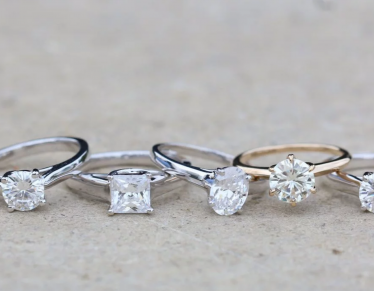We know that amber is incredibly beautiful, and has an almost ethereal feel to it when you look at it, but what exactly is it? This magnificent honey-colored gemstone is the final stage of tree sap that has been preserved over millions of years through fossilization. We then take amber and polish it like a regular gemstone, fit for wearing as a piece of jewelry. It is also used as a folk medicine for healing properties, and as a perfume or incense! It has a variety of uses, both ancient and modern. This incredibly unique stone has garnered attention from humans for over ten thousand years. Read on to find out more about amber jewelry history and its uses today.
The process of its creation makes it very different from regular gemstones. Regular gemstones, such as diamonds and sapphires, are created with pressure and *inorganic* compounds to make the beautiful stones you’re familiar with. Amber is unique in that it is classified as an *organic gemstone*, which means it was made from once-living materials. There are only a handful of organic gemstone types in existence, and it shares that the same classification as pearls, jet, ivory, coral, and petrified wood! Amber is rated between a 2 and 3 on the Mohs’ scale of hardness. It is soft, but not so soft that it could be scratched by a fingernail.
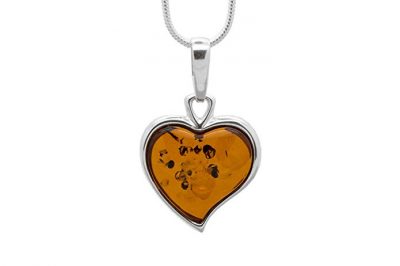
Amber has been incredibly important for humans living as early as the Neolithic era. This was the end of the Stone Age, ushering in a time when metal tools, agriculture, pottery, and jewel crafting had become commonplace. It was known to be manipulated into jewelry during this age, as early as 13,000 years ago. It gained popularity among early humans and was collected in large amounts to use for beads, amulets, and other forms of jewelry. Most ancient amber jewelry is found in the Jutland area, which is a peninsula in northern Europe that contains parts of northern Germany and Denmark.
Large caches of it have been found with other sacrificial offerings such as axes, suggesting that it played an important role in the lives of early humans. This incredibly beautiful stone has also been fashioned into ornaments found in Mycenean tombs – the ancient Greeks adored amber! Ancient Egyptians also imported it and adorned themselves with jewelry and made trinkets and other objects from it. The stone is still loved by people today, and it’s easy to see why. Amber is an incredibly beautiful stone with a ton of amber jewelry history dating back tens of thousands of years.
Location, Location, Location!
In antiquity, there was a trade route called the Amber Road. This trade route was established in the early Bronze Age roughly 4,000 years ago, connecting the North, Baltic, and Mediterranean seas. The stone was considered the “gold of the north,” and was a commodity valued by many, especially in the Roman Empire. The Romans desired it due not only to its beauty, but also metaphysical aspects. They used it for a variety of purposes aside from jewelry, as it was considered a medicine that could cure stomachaches, stress, headaches, and even toothaches! The amber that the Romans would import traveled along this Amber Road all the way from the Baltic.
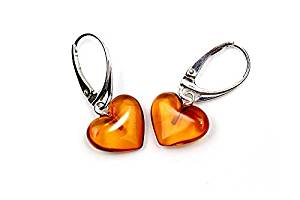
Amber in the Baltic was not traditionally mined for but found washed up on shore. The Baltic Sea is not a true sea at all, but more of an estuary of European rivers. In fact, the Baltic sea used to be surrounded by a forest of ancient pines that stretched from the south of Scandinavia into the bed of the sea itself from over 45 million years ago. The sap from these extinct pines has since become submerged but washes up on shore frequently enough to be considered a harvesting point. It washed up from the Baltic Sea is considered one of the most valuable types of amber today. These chips are highly desirable among jewelry connoisseurs due to their translucence, and among researchers due to the high amount of ancient plant and animal particulates found preserved within them.
Most of the it used today still comes from the Baltic region. This area includes Poland, Lithuania, Russia, Latvia, Estonia, Russia, Sweden, Denmark, and Germany. It is such an important aspect of the Baltic that there is even a museum dedicated to it! If you ever get a chance, take a visit to the Palanga Amber Museum. It’s located in Palanga, Lithuania, and houses around 28,000 pieces of amber. If you’re more into amber as a piece of jewelry (like we are!) don’t fret – there’s nearly 4,500 of amber artwork and jewelry being displayed. It’s a magnificent collection of some of the world’s most beautiful specimens.
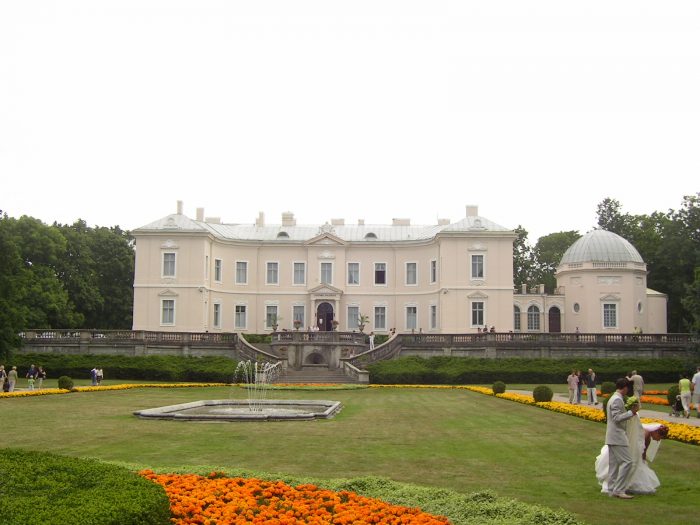
While Baltic amber comes from many different places within the Baltic, the predominant producer is Samland, in the Kaliningrad Oblast area of Russia. Currently, Samland is thought to contribute for more than two-thirds of the world’s entire supply and roughly 99% of all modern Baltic amber. Unlike Baltic Sea amber, amber from this region is typically mined, which is how it can be acquired steadily. Not only is Samland prolific in quantity but supplies many different colors and types of amber.
When you think of it, you may think of the traditional yellow one, which is almost the same color as honey. This one mostly comes from the Baltic region. Yellow amber is a bit of a misnomer, as it can also be red or brown in color as well. The shades are dependent on the type of tree sap that was fossilized, or any other particulates that may have gotten in. But the most prized yellow amber is the kind that is translucent. The more common one is opaque in nature and is easily distinguished from the translucent type due to it looking cloudy. In addition, opaque amber can have small bubbles inside of it. This type of opaque amber is known as bony amber.
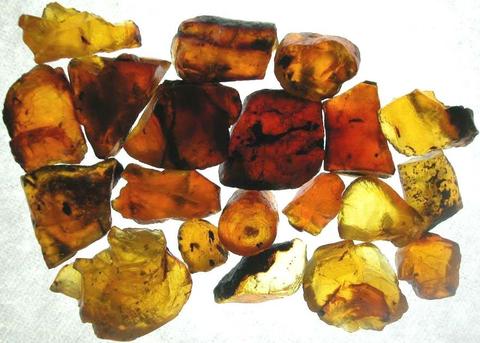
Denmark is also an important producer of Baltic amber. If you remember, a lot of prehistoric humans used it from the Jutland region – that’s where Denmark is located! This area is rich in amber jewelry history and was the origination point for the Amber Road. While the one from Jutland was more plentiful in ancient times, the stones from this area provide us with a rich illustration of human jewelry making and culture throughout the ages. Since Baltic amber is considered one of the most valuable types of amber, you’ll want to keep that in mind if you are looking for your own piece of amber jewelry.
It can also come from the United States, and many of the ambers found there tend to be darker in color. Most of it found in the United States is from the Cretaceous period. The Cretaceous period was when plants had first begun to grow flowers – before then, flowering plants did not exist! Much of it found in the United States is more used in scientific applications, studying the ancient life that flourished on the North American continent millions of years ago.
Found in Myanmar (formerly Burma,) Burmese Amber, also known as burmite, can be dated back to 99 million years ago. In addition to Baltic amber, burmite was prized by the ancient Romans as well, having it imported via the Silk Road starting in the first century CE. Burmite is known for its dark and bold red colors, ranging from sherry to a deep, almost blood red. Burmese amber is also highly fluorescent, meaning that it has a bright, almost milky sheen when reflecting light. This fluorescence is what burmite extraordinarily valuable, and certainly is worth seeing for yourself, but it’s not as reflective as this next type of amber!
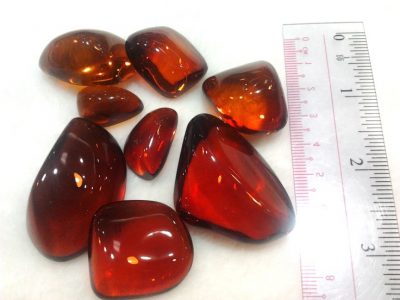
While you may have been familiar with the traditional golden-colored stones mentioned above, there is another type of extremely rare amber. It’s called blue amber and only is found in the Dominican Republic. While not all Dominican amber is blue amber, all Dominican amber is fluorescent, meaning that it has an incredibly strong reflection. Since amber is fossilized tree sap, this amber gets its blue hue from an extinct species of tree called Hymenaea Protera, which is a relative of the courbaril and West Indian locust trees. These trees lived between 30 and 40 million years ago, and much like the forests of today, groves of *Hymenaea protera* were susceptible to forest fires as well.
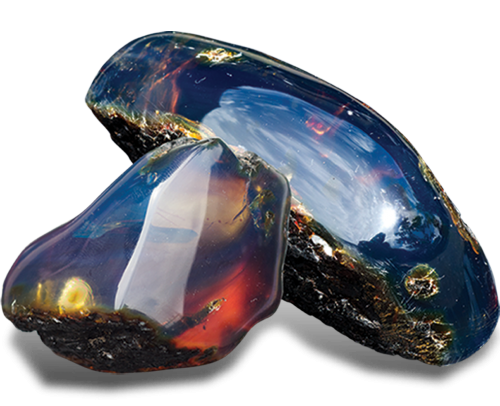
This was important in the formation of blue amber, as it’s speculated that an ingredient called anthracene was present due to incomplete combustion during the fires. Incomplete combustion occurs if there isn’t enough oxygen while things are burning, which releases different chemical compounds depending on the makeup of ingredients in the fire. This chemical, anthracene, being present is what makes blue amber so unique – the amber has an iridescent blue shine in sunlight and normal UV light and turns nearly white in long-wave UV light. If you ever decide to own a piece of blue amber, be sure to pick up a portable blacklight so you can see the magnificent white iridescence yourself; it really is an unbelievable sight!
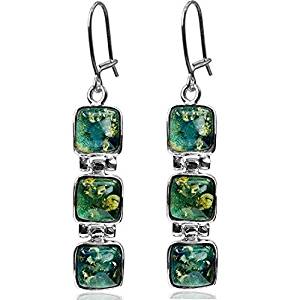
It can come from anywhere there have been trees (almost anywhere in the world!) but most of it found today is mined from just a few regions. Each region has its own unique properties of amber due to the types of trees and conditions that it was created from. Since different locations result in different amber colors, it’s important to remember where your favorite color of amber comes from. Be sure to keep the location in your mind if you decide to purchase a piece of amber jewelry for yourself!
Not Just a Pretty Stone
Now that you know where it comes from, it’s time to discover more in depth what it can be used for. As you can guess, this opulent stone is most commonly used in jewelry. It’s certainly *our* favorite use of the stone. But it is more than just a pretty stone – it also gives us valuable clues and insights into our past!
One of the benefits of it as a scientific tool is that it allows us to investigate the past with a honey-colored lens. As we mentioned before, amber has inclusions in it, and those inclusions are pieces of plant or animal matter that became trapped in the tree sap preserved for millions of years. This leads to all sorts of leads to follow in the search for answers about our ancient world. If you’ve been paying attention to dinosaur news, you may have heard that they discovered a feathered dinosaur tail trapped in amber from 99 million years ago! If you didn’t believe that dinosaurs had feathers yet, you better look – the fossil is absolutely stunning in detail.
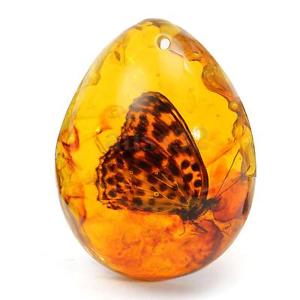
That dinosaur tail found in it isn’t the only notable example of ancient life found in amber. There are many prehistoric animals and plants trapped within. Scientists have even discovered how the earliest flowering plants used to reproduce due to the act itself being frozen in time in amber! There’s also ancient spider blood that’s been preserved, different types of insects, and even clues to how modern diseases such as Lyme disease existed millions of years ago. There is such a wealth of information stored in amber, and each inclusion in a piece contains these bits and pieces of the earth’s history in it. Of course, not every piece has been analyzed by scientists – you could even have an unknown species in your own piece of amber jewelry!

One of the most famous mentions of amber in popular culture was in the book and film Jurassic Park. At the beginning of the movie, the main characters were shown an animated film in which Mr. DNA explained the process of how they recreated the dinosaurs for the theme park island. This animation described their process involving using mosquitos trapped in prehistoric amber to extract DNA, the genetic code for any living being, which they used to clone and recreate dinosaurs.
While the process sounds far-fetched, it was inspired by a paleobiologist named George Poinar. In 1982, Poinar and his wife, Roberta Hess, published a research article which explained how certain parts of a cell were recognizable in the tissue of a 40 million-year-old fly that had been preserved in Baltic amber. This research inspired Michael Crichton, the author of Jurassic Park, to create the story we are familiar with today. After having read Poinar’s work on the Baltic amber fly, Crichton wanted to speak with Poinar personally. He contacted Poinar after writing most of the book, discussing his troubles on writing about acquiring dinosaur DNA, ultimately coming up with the idea that it was possible using mosquitos who had bitten a dinosaur before becoming trapped in amber.
The 1990s were rife with researchers trying to find a way to bring back extinct species, and this idea certainly seemed viable given the previous research. But in 2013, a team of scientists discovered DNA is generally too degraded even in copal, a tree resin which is a precursor in the fossilization process of amber. They looked at two samples: one from as early as 60 years ago and another as old as 11,000 years. They found that results for a direct DNA extraction were too incomplete to be considered for genetic reconstruction for both samples, which raises doubts about the validity of the process shown in the movie. If the DNA was so degraded in this tree resin, these scientists don’t believe that DNA would be useable in fossilized amber from millions of years ago. But while we may not be able to use amber to reconstruct ancient creatures, it still lets us explore ancient life!
But itisn’t just for research – it’s used as a medicine as well. Ancient Romans used it as a folk remedy to cure things such as headaches and stomachaches or to help reduce stress. Traditionally, the amber is powdered and then mixed with honey.
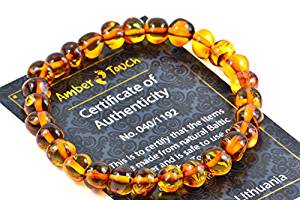
This remedy was used for gout, asthma, and even the black plague! That tradition continues even today with the cleansing and healing properties of it being an important focus in spiritual and magical work. Amber is used as a source of protection and well health and is valued due to its age. Since it is both organic and extremely old, it feels as if the gemstone holds a lot of wisdom and energy from the earth within itself. Inclusions in the amber, the little bits of plants and animals, are thought to increase the magical properties as well with their own energies. Since amber has been treasured for centuries for its healing and warm properties, it’s no wonder it’s gained notoriety for positive spiritual growth.
Our Favorite Use – Jewelry!
In addition to being rich in history, both for humans and our planet’s evolutionary history, our favorite use of amber *has* got to be in jewelry. The star sign of Taurus, amber is thought to bring balance We’re certainly not alone in our love for this stone, as you’ve learned that humans have been wearing amber jewelry for thousands of years, and we’ve come a long way from fashioning rough beads.
In Neolithic times, there were several different styles of amber beads. A common pattern was called an axe, which as you guessed it, looked like an axe. A double axe was a bead with the ax pattern duplicated on each side. These beads were generally flat, and archaeologists speculate they were worn flat against the body, perhaps adorned on a piece of clothing or other types of costume. The axe shape also translated into round beads which could be wrapped or threaded into a necklace.
There have also been stringed, tubular amber beads found that looks as if they were also from a necklace. Pendants have also been discovered found made of amber, suggesting there was a variety of ways Neolithic humans could have worn amber. While we do not know the significance of amber to these prehistoric humans, we can be sure it played an important enough role in prehistory to carry onwards into the modern era.
With the Amber Road, many people across the world had access to this “gold of the north,” allowing for a plethora of different types of jewelry to be created. With the rise in popularity also came a rise in counterfeit amber jewelry. One of the most common items to try and pass as amber is called copal. You can typically tell a piece of jewelry is made with copal, and not amber, when there is a perfectly preserved whole plant or insect within the jewelry, without an extremely high price tag. You can also tell if a piece of “amber” is made from copal or another imitation by rubbing it.
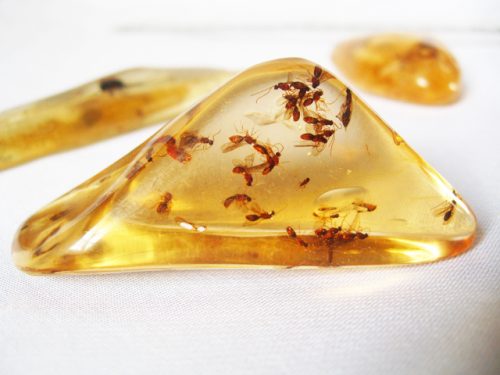
Jewelers also make use of smaller pieces of it by mixing linseed oil with the amber, heating up, and then pressing the pieces together to create what is known as amberoid, or pressed amber. This can be distinguished by what look like elongated air bubbles trapped inside the amber. While still technically a piece of amber, the value of the amber as a piece of prehistory is lost in pressing. It is still incredibly beautiful, and the process can turn opaque amber almost transparent using oils and other enhancements, but it is not as valuable as a whole, unenhanced piece of amber. Amberoid does allow jewelers to make larger and fantastically brilliant pieces of jewelry, so it’s not something to ignore if you’re a fan of flashy!
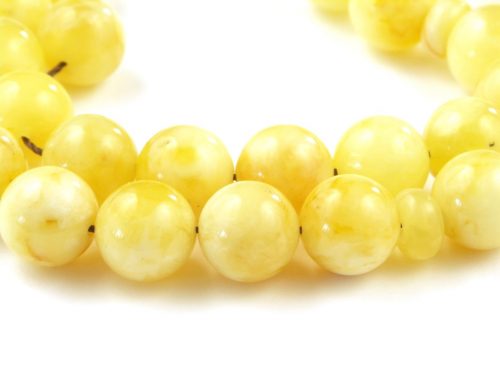
Usually, a piece of it is genuine when it does not have a uniform shape. It instead is tumbled to be polished into chips, and then used in applications of jewelry making. However, it can also be carved to create intaglio and cameo shapes, so a piece of it being a uniform shape is not a guaranteed rule. It is also important to note that not all pieces of amber will have large inclusions. Some will try and counterfeit an inclusion in a genuine piece by inserting an insect into the gem and sealing it with copal. You can spot a fake rather quickly by checking the color of the inclusion. The particulate matter should be black, not colorful.
Now that you know the ways to identify amber jewelry, let’s talk about all the different ways you can wear it! We mentioned cameos and intaglios earlier – those are types of carvings of faces or other scenes that are typically put into pendants for necklaces. There are many other types of pendants as well, such as cabochons made from amberoid. Amber chips can also be fashioned into beads to be threaded onto a necklace as well, much like the amber necklaces recovered from Neolithic times. It’s quite common for amber to be surrounded in silver or gold as well, creating incredibly ornate shapes. You can also find pieces of amber with plants or insects inside, allowing you to wear a piece of ancient amber jewelry history around your neck!
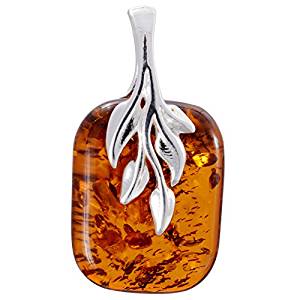
Amber can also be turned into rings and depending on the size of the piece of amber can be either a statement piece or a delicate ring. Some rings can be made from amberoid, allowing for larger gems, and some of the more delicate styles can be adorned with filigree. This stone is excellent in earrings as well due to how light it is. It lends itself well to drop-style earrings but is also seen in stud styles as well. Since amber is fairly varied in size and appearance, there’s really no limit on the style of jewelry you can find.
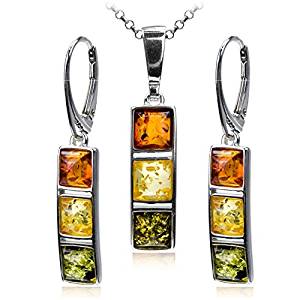
Typically, amber jewelry that is priced lower is either made from smaller pieces of opaque amber, which is the most common type, and larger pieces made of amberoid. This would be considered more of costume jewelry due to the low cost of production, but there are some amazing pieces you can find even in this price range depending on where you look. The middle range pieces tend to be of higher quality, and this is where you will see less of the pressed amber in jewelry. These pieces may also label where the amber comes from, so if you know you’re partial to certain colors of Baltic amber, you’ll want to look in the mid-range for a perfect piece of jewelry.
Finally, the higher end pieces of amber tend to be larger pieces with inclusions and more of a natural shape. You may find pocks in the surface, or gas bubbles in these pieces, but that is a positive! Higher priced pieces also can be translucent, which is the most desirable type of amber. Ambers from Myanmar, Sicily, and pieces from the Baltic Sea tend to be priced in the higher range due to these traits. Finally, you can find Dominican Amber in that striking blue color as well, although those tend to be some of the most expensive out of all ambers due to the rareness and exceptional fluorescence that comes from the stone.
—
As you can see, amber is an incredibly unique stone with a fantastic history. Not only can this beautiful stone spice up an outfit, but it can also help us understand our earth’s past. The more you know about this amber jewelry history, the more you can share the wonder of this natural beauty with others. It’s not just a pretty stone, it’s a marvelous example of just how beautiful nature can be. No matter what form you choose to appreciate amber jewelry in, make sure that you add at least one piece of it to your collection!

